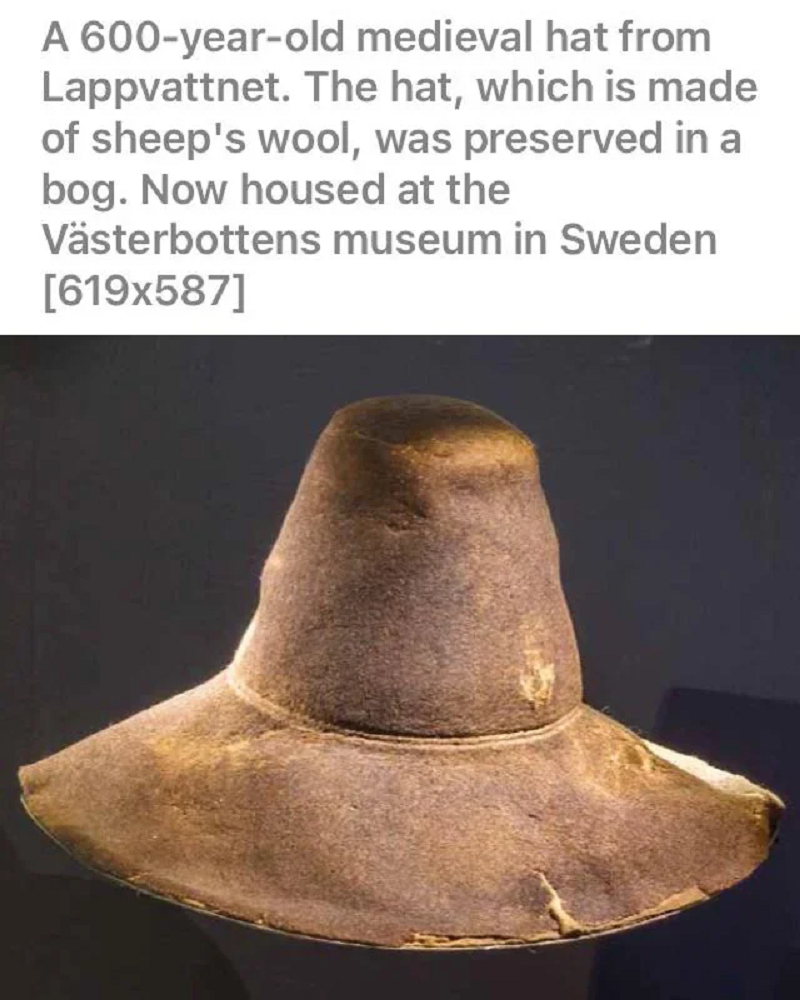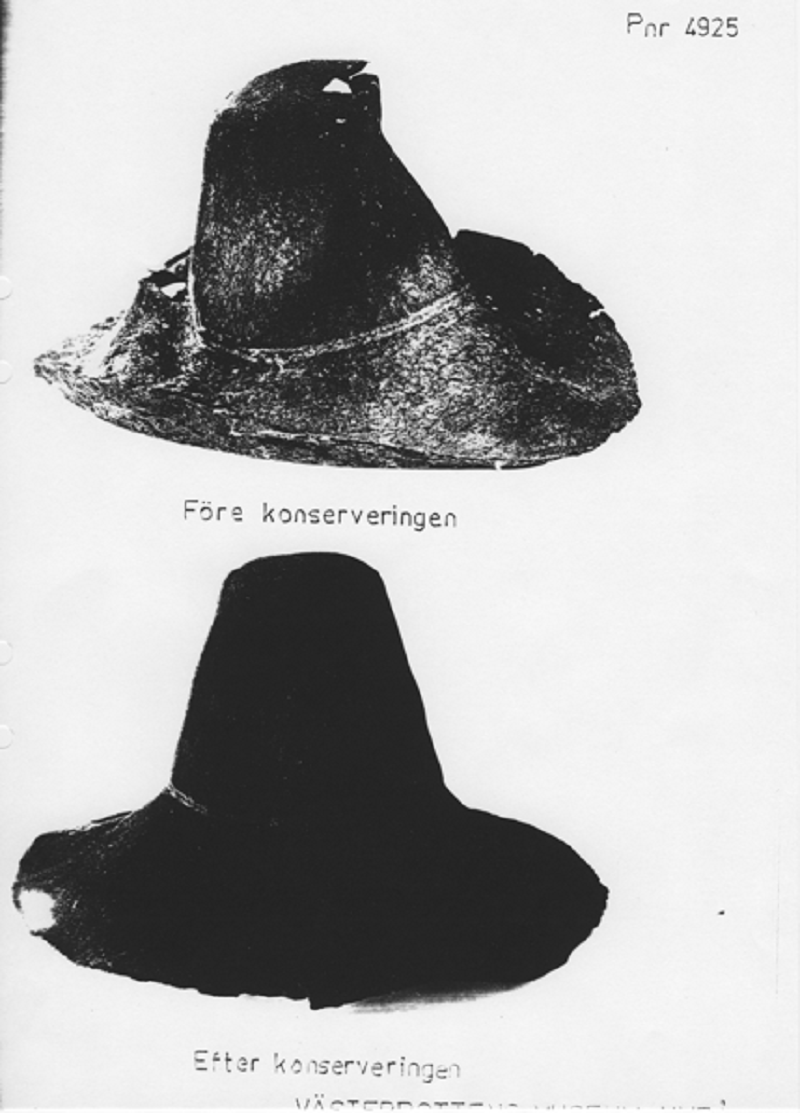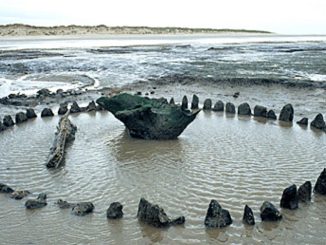In the remote marshes of Lappvattnet, Sweden, a remarkable discovery was made – a 600-year-old medieval hat made of felted sheep’s wool, perfectly preserved in the bog’s acidic waters. This extraordinary artifact provides a fascinating glimpse into the fashion and craftsmanship of medieval Europe, offering valuable insights into the daily lives of people from centuries past. Join us as we unravel the story of this ancient hat, now housed at the Västerbottens Museum in Sweden, and explore its significance in our understanding of history.

The Discovery of the Medieval Hat: A Remarkable Find
The discovery of the medieval hat from Lappvattnet is a testament to the power of archaeology to uncover hidden treasures from the past. Found preserved in the bog’s anaerobic conditions, the hat is remarkably intact, allowing researchers to study its construction and materials in detail. Made of felted sheep’s wool, the hat is a testament to the skill and craftsmanship of medieval artisans, who would have painstakingly crafted it by hand using traditional techniques.
Unraveling the Mysteries of Medieval Fashion
The medieval hat from Lappvattnet provides valuable insights into the fashion trends of the time, shedding light on the types of headwear worn by people in medieval Europe. Its design and construction suggest that it may have been worn by someone of modest means, perhaps a peasant or commoner going about their daily life. The hat’s simple yet functional design reflects the practicality of medieval clothing, which was often tailored to withstand the rigors of daily labor and outdoor activities.

Preservation in the Bog: A Stroke of Luck
The remarkable preservation of the medieval hat in the bog’s acidic waters is a stroke of luck for archaeologists and historians. The bog’s anaerobic conditions prevent the decay of organic materials, allowing fragile artifacts like textiles to survive for centuries. As a result, the hat from Lappvattnet offers a rare opportunity to study medieval clothing and craftsmanship in unprecedented detail, providing valuable insights into the material culture of the period.
The Significance of Archaeology: Connecting Past and Present
The discovery of the medieval hat from Lappvattnet highlights the importance of archaeology in preserving and interpreting our shared human heritage. Through careful excavation and analysis, archaeologists can uncover hidden stories and forgotten treasures, enriching our understanding of history and culture. Moreover, artifacts like the medieval hat serve as tangible links to the past, connecting us to the lives and experiences of people who lived centuries ago.

In conclusion, the medieval hat from Lappvattnet is a remarkable testament to the ingenuity and craftsmanship of medieval artisans. Its preservation in the bog’s acidic waters has allowed researchers to uncover valuable insights into medieval fashion and daily life, shedding light on the material culture of the period. As we marvel at this ancient artifact, let us also reflect on the broader meaning and benefits of archaeology in preserving and interpreting our shared human heritage. Through our engagement with the past, we gain a deeper appreciation for the complexities of history and the enduring legacy of those who came before us.
Read more : https://model.icusocial.com/author/bspvt01/?utm_source=KC&utm_medium=H&utm_id=3


